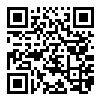 |
 |
Introduction
In the good old days, we all judged the temperature of our cookers using a dial thermometer stuck
through the side of the cooker. But now, we have thermometers galore. Analog, digital, Bluetooth,
Wireless, thermocouples, thermistors, RTD Platinum, and on and on and on. So is it any wonder that
people constantly asking why they are getting different readings on different thermometers?
Well one of the most frequently asked questions is "Why am I getting different readings when I clip my digital thermometer to the stem of my dial thermometer?" To answer this question, you have to know what type of dial thermometer you are using and understand how it works.
Dial Thermometer Construction
Almost all dial thermometers use a bimetallic strip which converts a temperature into mechanical
displacement. Bimetallic strips consist of two strips of different metals having different
coefficients of thermal expansion. The metal strips are connected along their length by fusing them together.
The strips are fixed at one end and free to move on the other end. There are two types of bimetallic
thermometers, helical and spiral, meaning the bimetallic strip is either wound in a helix or in a spiral.
Most of the dial thermometers used for barbecue cookers are helical, meaning the bimetallic strip is
wound in a helix and located in the stem of the thermometer:

Temperature Variation
To measure the temperature variation along the length of the stem of a dial thermometer, we
inserted a bamboo skewer through the hole in a large Big Green Egg cooker and mounted small
thermocouples at 1" intervals, starting ½" from the inside surface of the dome:

We then heated up the cooker to a moderate temperature and let the cooker stabilize. The following graph shows what temperatures were recorded at those four positions along the stem of our bamboo thermometer when the cooker temperature as measured at the grate was 350°F.

So, depending on where you measure, there could be an average temperature difference as great as 28°F and a maximum difference of 40°F. Or to put it another way, depending on where you clip your digital thermometer's probe, you could get readings as much as 40°F apart.
You can support this website by shopping at
The Naked Whiz Website Store and
Amazon.com
1Bt4vjU9PUQNVvEZZq6ik6jWYr6nr4rJRp
So, here is what we have learned from our testing:
So, test your probes and your dial thermometers in boiling or freezing water. If they are close, they
will still be close when you put them in your cooker. Any difference you experience is caused by where you clip your
probe.
All Contents ©2001, 2023 The Naked Whiz
International Association of Fire Safety Science member #1604

You can make donations to The Naked Whiz
Website using Bitcoin! Scan the QR code at
left or copy and paste our wallet ID:
